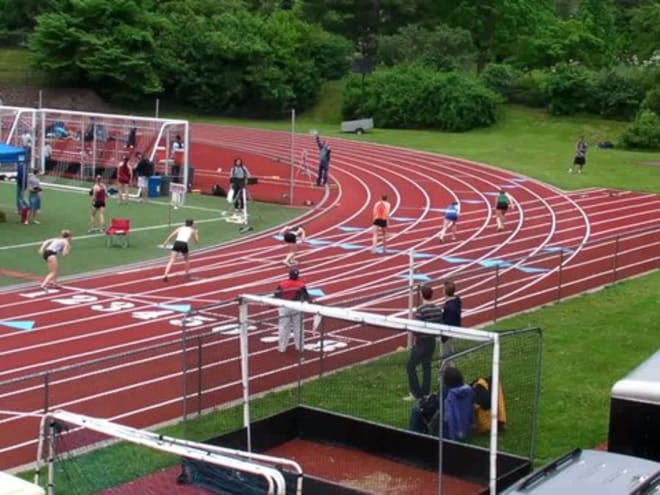Search results
Columbus State Community College. Looking for help with registration, financial aid, and other questions? Visit and chat live with Student Central. What is your area of interest? At Columbus State, you can choose from a wide range of programs that will prepare you to transfer to a four-year college or jump right into the workforce.
News about Golden State Warriors, Oklahoma, Oregon State Hospital
News about Top Girls
Also in the news
This article lists the 50 states of the United States. It also lists their populations, the date they became a state or agreed to the United States Declaration of Independence, their total area, land area, water area, and the number of representatives in the United States House of Representatives.
- Overview
- Land
- Relief
- Drainage
- Soils
Ohio, constituent state of the United States of America, on the northeastern edge of the Midwest region. Lake Erie lies on the north, Pennsylvania on the east, West Virginia and Kentucky on the southeast and south, Indiana on the west, and Michigan on the northwest. Ohio ranks 34th in terms of total area among the 50 states, and it is one of the smallest states west of the Appalachian Mountains. The state ranks near the top, however, in population. Ohio’s capital, after being located in Chillicothe and Zanesville during the early years of statehood, was finally established in newly founded and centrally located Columbus in 1816. The state takes its name from the Ohio River, which in turn traces its name to an Iroquoian word meaning “great water.”
The first state to be carved from the Northwest Territory, Ohio became the 17th member of the union on March 1, 1803. In many respects, Ohio has come to reflect the urbanized, industrialized, and ethnically mixed United States that developed from an earlier agrarian period. The pattern of its life is so representative of the country as a whole that it is often used to test attitudes, ideas, and commercial products. Significantly, Ohio has supplied by birth or residence eight U.S. presidents—William H. Harrison, Ulysses S. Grant, Rutherford B. Hayes, James A. Garfield, Benjamin Harrison, William McKinley, William H. Taft, and Warren G. Harding.
The state’s accessibility has been perhaps the key factor in its growth. Its location between the Eastern Seaboard and the heart of the Midwest and its lack of natural barriers to movement made it a corridor for east-west travel. In addition, the state lies in the heart of the country’s old industrial belt, close to major resources of raw materials and labour and to the markets of the East, Midwest, and South.
Area 44,826 square miles (116,098 square km). Population (2020) 11,799,448; (2023 est.) 11,785,935.
Britannica Quiz
U.S. State Capitals Quiz
The physiographic features of Ohio have strongly influenced its patterns of human settlement and land use. In most of the state, the topography, river systems, groundwater, and soils are the products of glacial activity.
Ohio straddles two major subregions of the Interior Lowlands physiographic region of the United States: the Appalachian Plateau on the east and the Central Lowland on the west. These two subregions divide the state almost in half. The Appalachian Plateau, reaching westward from Pennsylvania and West Virginia, stretches along Ohio’s eastern border, roughly from Lake Erie in the north to the Ohio River in the south. The northeast is only partially glaciated, while the southeast is unglaciated terrain. Throughout the plateau the land is dissected by rivers winding among steep hills, and many areas reach elevations of some 1,300 feet (395 metres).
Exclusive academic rate for students! Save 67% on Britannica Premium.
Learn More
The Central Lowland reaches westward from the Appalachian Plateau. The Lake Plains section of the lowland extends along Lake Erie and across the northwestern segment of the state to the Michigan border, before stretching irregularly to the south. It then levels to become slightly rolling terrain that was once under water; the swampiness of the northwest, around Toledo, posed obstacles to settlement before drainage made the land more arable. The Central (or Till) Plains, which extend westward toward the Mississippi River, include parts of western and southwestern Ohio and provide a deep soil. That region contains the state’s highest and lowest points: Campbell Hill, the highest point, at 1,549 feet (472 metres), is located near Bellefontaine; the lowest point, at 433 feet (132 metres), lies at the confluence of the Miami and Ohio rivers, near Cincinnati.
The principal water sources are rain-fed streams, lakes, and reservoirs. Floods, once prevalent, have generally been brought under control by state and federal dams and other conservation measures. Groundwater is used widely for public supplies, though the industrial and population centres have limited access to these resources. Huge stores of these waters are buried in preglacial valleys in central and south-central Ohio.
Lake Erie, with an average depth of only 62 feet (19 metres), is the shallowest of the Great Lakes. It is also the most tempestuous, with frontal storms often roaring across it from Canada, and the most liable to shoreline erosion, harbour silting, and filling of its bed. Its shallowness, coupled with the concentration of population, farms, and industrial plants in its watersheds, led to severe pollution by the mid-20th century. Subsequent attempts to abate pollution in Lake Erie have shown signs of success, however. Fish returned to previously uninhabitable waters, a revival of sport fishing and recreational activity stimulated economic growth along the shoreline, and urban water supplies were protected.
Most of Ohio’s soils are well suited to agriculture. The naturally fertile Central Plains soils contain glacial limestone, and they also are rich in phosphates—one of the principal ingredients in fertilizer. Lake Plains soils also are highly productive. The sandstone-based soils of central and northeastern Ohio are best adapted to pasturelands, whi...
Learn the various meanings and uses of the word state as a noun and a verb, with examples and related terms. Find out how state can refer to a way of living, a condition, a government, a region, or a form of matter.
Skip to Navigation. An official State of Ohio government website. Here's how you know. The site is secure. The https://ensures you're connecting to the official website and any information you provide is encrypted and cannot be seen by anyone else. The .gov means it's official.
People also ask
What is the definition of a state?
What are some examples of states?
What is the difference between a state and a polity?
What is the difference between a state and a nation?
Home. About The Ohio State University. Discover the Ohio State difference. We create unrivaled experiences that bring together expertise, ideas and resources that improve communities locally and globally. About The Ohio State University. Education. See how Ohio State is helping others create and discover knowledge. Visit Office of Academic Affairs.
noun. the condition of a person or thing, as with respect to circumstances or attributes: a state of health. the condition of matter with respect to structure, form, constitution, phase, or the like: water in a gaseous state. status, rank, or position in life; station: He dresses in a manner befitting his state. Synonyms: standing.







